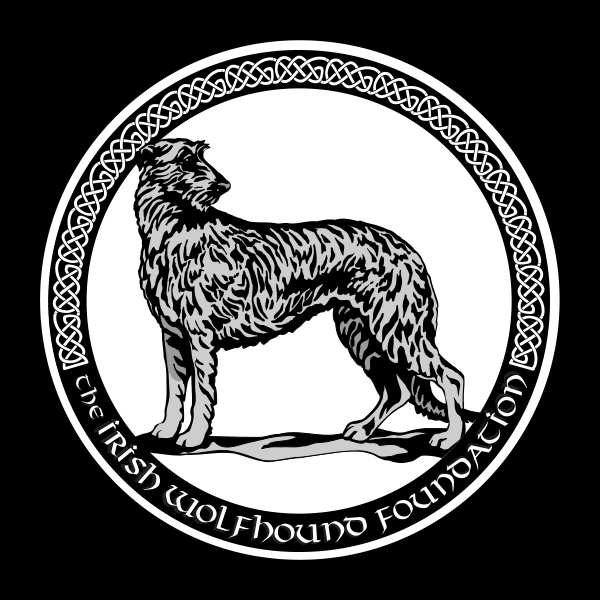Suggested tests:
Primary tests:
CBC
Chem panel
Urinalysis
Toxicology Screen
Titers for tick-borne diseases such as Lyme or ehrlichiosis
EKG
Secondary tests:
TSH - if EKG is not normal
Echocardiogram - to rule out DCM
Chest xray - to rule out lung pathology
Bile Acid test - to rule out PSS
Tertiary tests:
CAT scan
MRI
Mylogram
Spinal tap with fluid and cell analysis
If possible, a veterinary neurologist should examine the dog or a thorough neurological examination be performed.
MAINTENANCE
What To Do
Witnessing an Irish Wolfhound during a seizure is a frightening experience. It is important to remember a few basic points in dealing with an epileptic episode in order to keep you and your IW safe.
- Clear the area of all other animals and small children. Small children may inadvertently get hurt or frightened. Other animals may attack the dog that is having the seizure. Even animals that have always lived closely together can give in to instinctive pack behavior.
- Make sure that area near the hound is clear of objects that may be harmful. These things could include furniture, potted plants, lamps or food and water bowls.
- Cushion the dog’s head with a towel or folded blanket.
- DO NOT put your hand in the animal’s mouth during the seizure
- DO NOT try to restrict the movement of the legs or head during the seizure.
- Be calm and limit sudden gestures and movements. If you talk to your animal, keep an even and normal tone of voice.
- Seizures of more than 5-minute duration are very dangerous to the animal. Contact your veterinarian or animal emergency clinic immediately.
After the seizure the animal may be disoriented and wobbly. You may want to keep a towel nearby to support the animal’s rear when it is ready to attempt to stand. The dog may have lost control of its bladder and/or bowel. This is normal. Recovery time varies with each animal and each seizure. It may be awhile before your hound will recognize you. Be patient and do not force him/her to do anything. Some hounds may take up to 24 hours to return to normal behavior.
Try to remember to keep a record of each seizure. Items in the record should include date, time, the durations of seizure and recovery, and any unusual occurrences during the episode. This will help you and your veterinarian to determine a course of treatment.
How To Maintain an Affected Animal
Determining the best treatment protocol for your Irish Wolfhound is not an easy task. Since all sighthounds are known to be sensitive to barbiturates, extreme care should be taken when choosing a maintenance program. It is important also to regularly monitor liver function and blood levels of medications. Each animal’s seizure is unique to the individual and should be treated as such. What works for one animal, even a sibling, may not work for another. Treatment of seizures in Irish Wolfhounds is an Art not a Science. Be prepared to adjust medication as needed.
There are two basic approaches to treating the Irish Wolfhounds in this study. The first protocol involves administering medications in doses large enough to control or eliminate the seizures. For Irish Wolfhounds this option may be based on an unrealistic expectation based on the information accumulated I the course of this study. The second method is to reduce the severity and frequency of the seizures rather than attempting to eliminate the seizures themselves. The majority of owners in the past have chosen the first type of maintenance protocol for their animals. A growing number of owners are choosing the second method with good results in quality of life for their hounds.
Anyone wishing to contact other owners of Irish Wolfhounds with seizures who have volunteered to openly discuss their experiences and offer support to others may do so by writing to the Study e-mail address. Your mail will be promptly forwarded. iwstudies@comcast.net.


